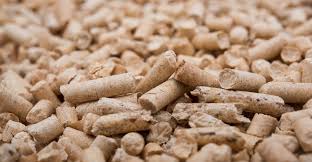
Introduction to Biomass Pellets
Biomass pellets have emerged as one of the most sustainable and efficient fuel sources in today’s energy landscape. Made from compressed organic materials like sawdust, wood chips, and agricultural waste, these pellets offer a clean-burning alternative to fossil fuels.
In this comprehensive guide, we’ll explore:
- What biomass pellets are and how they’re made
- The current biomass pellets price per ton market trends
- Key benefits of using wood pellets for heating and industrial applications
- How to choose the best quality pellets for your needs
Whether you’re a homeowner looking for eco-friendly heating solutions or an industrial user considering biomass energy, this guide covers everything you need to know.
What Are Biomass Wood Pellets?
Biomass wood pellets are small, cylindrical pieces of compressed organic material, typically 6-10mm in diameter and 10-30mm long. They’re produced through a specialized manufacturing process that transforms raw biomass into dense, energy-rich fuel pellets.
Raw Materials Used:
- Sawdust and wood shavings (most common)
- Agricultural residues (straw, husks)
- Energy crops (switchgrass, miscanthus)
- Forestry byproducts
Our A1 Wood Pellets are made from premium wood sources, ensuring high heat output and low ash content.
The Biomass Pellet Production Process
Understanding how pellets are made helps ensure you’re getting quality product. Here’s a simplified breakdown of the production process:
- Raw Material Preparation
- Debarking and chipping
- Size reduction through hammer mills
- Drying
- Moisture content reduced to 10-15%
- Pelletizing
- Material compressed under high pressure
- Natural lignin acts as binding agent
- Cooling and Screening
- Pellets hardened and stabilized
- Fines removed for quality control
- Packaging
- Bulk bags or 15-40lb consumer bags
For a detailed look at our methods, see our production process of A1 Wood Pellets.
Biomass Pellets Price Factors
The biomass pellets price per ton fluctuates based on several key factors:
1. Raw Material Costs (40-60% of total cost)
- Hardwood vs. softwood
- Local availability of feedstock
- Our A1 Wood Pellets wood sources ensure consistent quality
2. Production Costs
- Energy consumption during manufacturing
- Labor and maintenance
- Quality control measures
3. Transportation and Logistics
- Distance to market
- Bulk vs. bagged delivery
- See how we handle loading A1 Wood Pellets for clients efficiently
4. Market Demand
- Seasonal fluctuations (higher in winter)
- Government policies and incentives
Current Price Ranges (2025):
| Market | Price Per Ton |
|---|---|
| Residential Premium | 250−350 |
| Industrial Grade | 180−250 |
| Bulk Purchase (200+ tons) | 160−220 |
Prices vary by region and order volume – always check current biomass pellets price listings before purchasing.
Benefits of Using Biomass Pellets
1. Environmental Advantages
- Carbon neutral when sustainably sourced
- 90% lower emissions than oil heating
- Utilizes waste materials
2. Economic Benefits
- Stable biomass pellets price compared to fossil fuels
- Local job creation in rural areas
- Reduced energy dependence
3. Performance Characteristics
- High energy density (4.7-5.3 MWh/ton)
- Consistent size for automated systems
- Low moisture content (<10%)
Discover more about the benefits of A1 Wood Pellets for heating in our detailed guide.
Applications of Biomass Pellets
1. Residential Heating
- Pellet stoves (85-90% efficiency)
- Boiler systems for whole-home heating
2. Industrial Uses
- Power generation
- District heating systems
- Combined heat and power (CHP) plants
3. Commercial Applications
- Schools and hospitals
- Greenhouses
- Food processing
4. Emerging Uses
- Animal bedding
- Absorbents for spills
- Carbon source for water treatment
How to Choose Quality Biomass Pellets
When evaluating biomass wood pellets, consider these quality indicators:
1. Certification Standards
- EN Plus (Europe)
- PFI (USA)
- CANplus (Canada)
2. Physical Characteristics
- Low fines content (<1%)
- Consistent diameter and length
- Shiny surface indicates proper compression
3. Performance Metrics
- Ash content (<0.7% premium, <3% standard)
- Calorific value (>16.5 MJ/kg)
- Mechanical durability (>97.5%)
4. Supplier Reputation
- Transparent sourcing
- Reliable delivery
- Quality guarantees
Our A1 Wood Pellets meet all premium quality standards for demanding applications.
The Future of Biomass Pellets
Industry trends suggest continued growth in the biomass pellets price market:
1. Global Market Expansion
- Asia-Pacific demand growing at 12% CAGR
- European renewable energy targets driving imports
2. Technological Advancements
- Improved pellet mill efficiency
- Advanced feedstock preprocessing
3. Sustainability Developments
- Certification systems expansion
- Carbon credit integration
4. Price Stability Factors
- Increased production capacity
- Improved supply chain logistics
Conclusion
Biomass pellets represent a smart choice for environmentally-conscious energy users. With competitive biomass pellets price per ton points and numerous applications, they offer a practical renewable energy solution.
Key takeaways:
- Premium pellets like our A1 Wood Pellets deliver consistent performance
- Understanding production methods ensures quality purchases
- Prices vary based on grade, quantity, and location
- Multiple applications from home heating to industrial use
Whether you’re comparing biomass pellets price options or evaluating suppliers, this guide provides the foundation for making informed decisions about sustainable biomass energy.